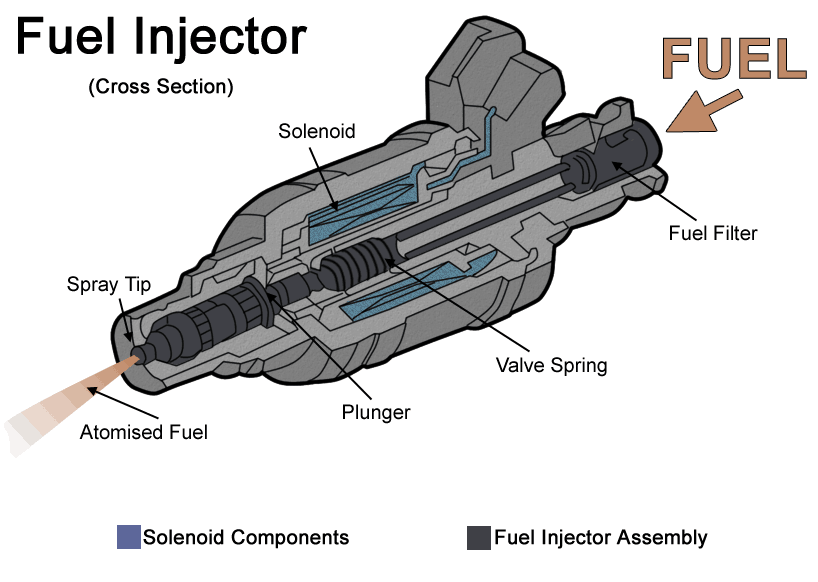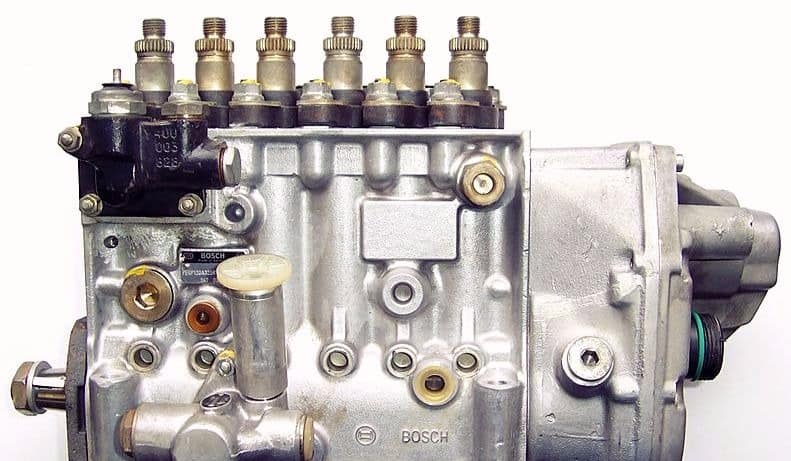In their race for differentiation and competitiveness, automotive brands have put their focus on two mechanical aspects: efficiency and emission control. Most of their R&D is targeted at reducing consumption and offering more Environmentally-friendly vehicles. In this matter, the emergence of electronic control systems has brought a revolution on every level, and both Tier 1 and Tier 2 manufacturers compete with each other to offer end users the most innovative electronic fuel injection systems. In this article, we go over the way in which these devices work and the role actuators play in new electronic fuel injection systems.
In the race for efficiency, in the last few years we have seen the emergence of control systems that have become increasingly widespread. This is the case for the well-known Start&Stop system, the VVT –variable valve timing–, driver assistance systems such as the gearshift indicator, multiplexing of the vehicle’s electrical systems or gasoline direct injection systems, among others. Improvements over all of these technologies, as well as the emergence of new ones, are drastically improving fuel efficiency levels.
What fuel injection systems can we find on the market?
They are named differently depending on the location of the injectors, the number of injectors, or depending on the amount of times they provide fuel to the engine.
Petrol injection
Direct injection: It is the most widespread method. This system injects petrol directly into the combustion chamber next to the inlet manifold. Thanks to this privileged location, the injection enters the chamber of the cylinder block directly, and there air is mixed with the petrol. The dosage, preparation and distribution of air and petrol in a precise manner for each combustion cycle enable fuel consumption and emissions to be reduced.
Indirect injection: This model sees more use in vehicles that have engines with a smaller displacement. In this case, injectors are located in the inlet manifold working in direct contact with the air. The fuel then enters the cylinder block as a mixture.
Single-point injection: It is also an indirect injection system. It uses a single injector located in the inlet manifold. In this case they are not located in the chamber, since they would need one injector for each cylinder.
Multi-point injection: It uses as many cylinders as there are cylinders, and it can be found in mid-range to high-end models. Due to its characteristics, the fuel injection can take place both directly and indirectly.
Continuous injection: This name is given when the injection is performed non-stop, only modifying the flow when the vehicle stops.
Pulse injection: This injection system is 100% electronic, which allows the injection to stop whenever the vehicle no longer requires it. It is the true protagonist of this article and can be divided into: simultaneous (controlled injection into all the cylinders at the same time), sequential (separate injection to each cylinder), and semi-sequential (injection into two cylinders at a time).

Diesel injection
It differs from the petrol injection by the way in which the mixture and the combustion inside the cylinders is generated.
Indirect injection: Its combustion chamber has a pre-chamber in the cylinder head that is connected to the main chamber through a nozzle. In this case, the injector delivers the fuel into this chamber. Once the diesel fuel starts burning, it causes a pressure increase that pushes the air and unburned fuel into the main chamber through the nozzle. During this process, the fuel-air mixture is forced in, and will burn up completely once in the main chamber.
Direct injection: The injection chamber is located in the cylinder head. There, fuel is injected through an injector that mixes the Diesel with the air into the intake valve.
During this process, the atomisation of the fuel is essential – it is the only way in which the mixture will reach the entire combustion chamber. In order to satisfy this requirement, it is necessary to work at high pressures (1,000-2,000 bar / 14,500-29,000 PSI).
Among direct Diesel injection systems we can mention:
- Common-rail: In this system, diesel is aspirated directly from the fuel deposit by a pressure pump, from where the diesel is delivered to a duct which, as a result of the action of the injectors, will deliver the fuel to the engine’s cylinders.
- Pump-injector: Both the injection pump and the injector from a single unit. Since no high-pressure piping is present, higher pressure is generated, which results in less fuel consumption and emissions.
Do you want to improve your automotive component supplier management? Download this CLR free guide
Main actuators in an Electronic Fuel Injection (EFI) system
Pump relay
When turning the ignition to the start position, the ECU receives a voltage from the battery, and delivers it to the fuel pump relay. This relay sends a signal to the ignition switch, which in turn sends a signal to the fuel pump to start the system. All other actuators and components in the injection system depend on powering the Relay.
The valves
In injection systems, the valves are some of the most important components, since they allow the intake of different fluids involved in the injection of air, the mixture, and the fuel. What injection valves are there?
– Canister valve: A key component for the emission control system. Thanks to the movement of this valve, vapours contained in the fuel tank (more specifically, in the carbon filter) are transported into the engine thanks to the action of this valve.
– IAC (Idle Air Control) Valve: It is in charge of adjusting the engine idling revolutions, managing and regulating the influx of air towards the combustion chambers.
Step motors
This electromechanical mechanism converts electrical impulses into angular motions. It is a mechanism that moves by certain degrees (steps) depending on its control inputs, and is in charge of controlling the intake of air in fuel-injected engines.
Injector and pump
The former pulverises the petrol or diesel delivered by the pressurised line into the intake pipe or the chamber. The latter is in charge of delivering an optimal energy for moving the fuel flow through the injector.
What are the latest systems introduced by major Tier 1 companies and manufacturers?
Bosch water injection system for petrol engines
Known as WaterBoost, this new system not only improves the engine’s efficiency, but also reduces its consumption and increases its power.

Delphi combined Diesel injection system (common-rail and injector-pump)
Both systems, which until now were rivals in Diesel injection systems, now work together to boost diesel injection performance. This new generation increases pressures up to a range of 2,700-3,000 bars (39,000-43,500 PSI). This increase boosts efficiency and performance while taking care of fuel consumption.

Employed both in diesel and petrol engines. This system doubles the number of injectors per cylinder and reduces the diameter of fuel drops, offering a smoother, more stable combustion.

CLR’s Automotive Presentation
Would you like to learn more about our capabilities in the automotive industry? Would you like to propose we work together on a project of this kind? Contact our engineering team.












